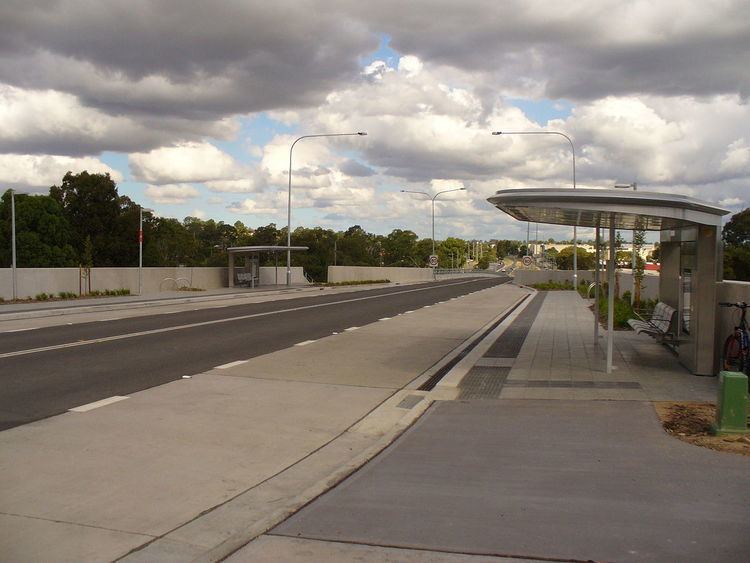Type Bus rapid transit Status Active Stations 31 | System T-ways Locale Sydney | |
 | ||
Termini Parramatta; BlacktownRouse Hill; Parklea | ||
The North-West T-way is a bus rapid transit line in the north-western suburbs of Sydney, Australia. T-way is short for rapid bus transitway.
Contents
The T-way consists of two sections, one linking Parramatta railway station and Rouse Hill, the other linking Blacktown and Parklea. The lines intersect at Burns interchange in Parklea. For the most part, stops are named for the streets they are located upon.
The T-way was approved in February 2004 and the Merriville to Parramatta section opened on 10 March 2007. Sanctuary and Rouse Hill opened on 25 September 2007 upon the opening of the Rouse Hill Town Centre development. The final section, the Blacktown to Parklea branch, opened 4 November 2007. The T-way is the second in Sydney: the Liverpool-Parramatta T-way has operated since February 2003.
Design and construction
The T-way was a joint venture between the NSW Ministry of Transport and the NSW Roads and Traffic Authority. The A$330 million contract to design, built and maintain until 2017 was awarded to Leighton Contractors in 2005.
The project was approved in February 2004 and construction began in mid-2005. Construction was expected to take just over two years and cost $524 million. According to a report in The Sydney Morning Herald, many of the costly design mistakes made in the development of the Liverpool-Parramatta T-way have been avoided on the North-West T-way.
The 24-kilometre-long (15 mi) T-way includes:
Criticisms
The T-way and its operations has come under criticism in several areas. Even before its opening, the Roads and Traffic Authority was criticised for its lack of planning and broken promises on the T-way's construction. Parramatta Council complained during construction that noise walls had not been built next to the homes of residents who lived along the T-way route, causing them distress. The planned cycleway alongside the T-way was not built in its entire length, and included a large deviation which Council complained would erode the cycleway's effectiveness. After the opening of the first stage of the T-way, a local cycle advocacy group identified a large gap in the cycleway, potentially compromising cyclists' safety. Some local residents had their backyards destroyed.
On the opening of the initial route several other problems were raised. Comments were made concerning the initial patronage of the T-way. While the New South Wales State Government refused to say how many people used the T-way in its first week, a local newspaper discovered that the commuter carpark attracted as few as ten cars a day in the first week of operation. Another local newspaper reported a traffic barrier separating vehicles from the busway at Westmead railway station was causing accidents.
On 12 April 2007, the Roads and Traffic Authority quietly scrapped the bus priority system that would have given buses priority at all at-grade intersections. The decision was criticised as eliminating the main advantage of the T-way and not entice commuters back to public transport. Bus operators expected better patronage once the toll on the Lane Cove Tunnel came into effect.
There have also been many complaints regarding city bus travellers from Rouse Hill and Kellyville Ridge as their trips were taking 1.5 hours and were overcrowded. Hillsbus had seen increased patronage on city services with the new timetable and is not able to cope with the demand.
Services
Private bus operators Busways and Hillsbus operate North-West T-way services. There are many services which traverse the T-Way, either in its entirety or a section of it. The route numbering follows the Sydney Metropolitan Bus Route Numbering System.
The following services use the Parramatta - Rouse Hill T-Way
The following services use the Blacktown - Parklea T-Way
